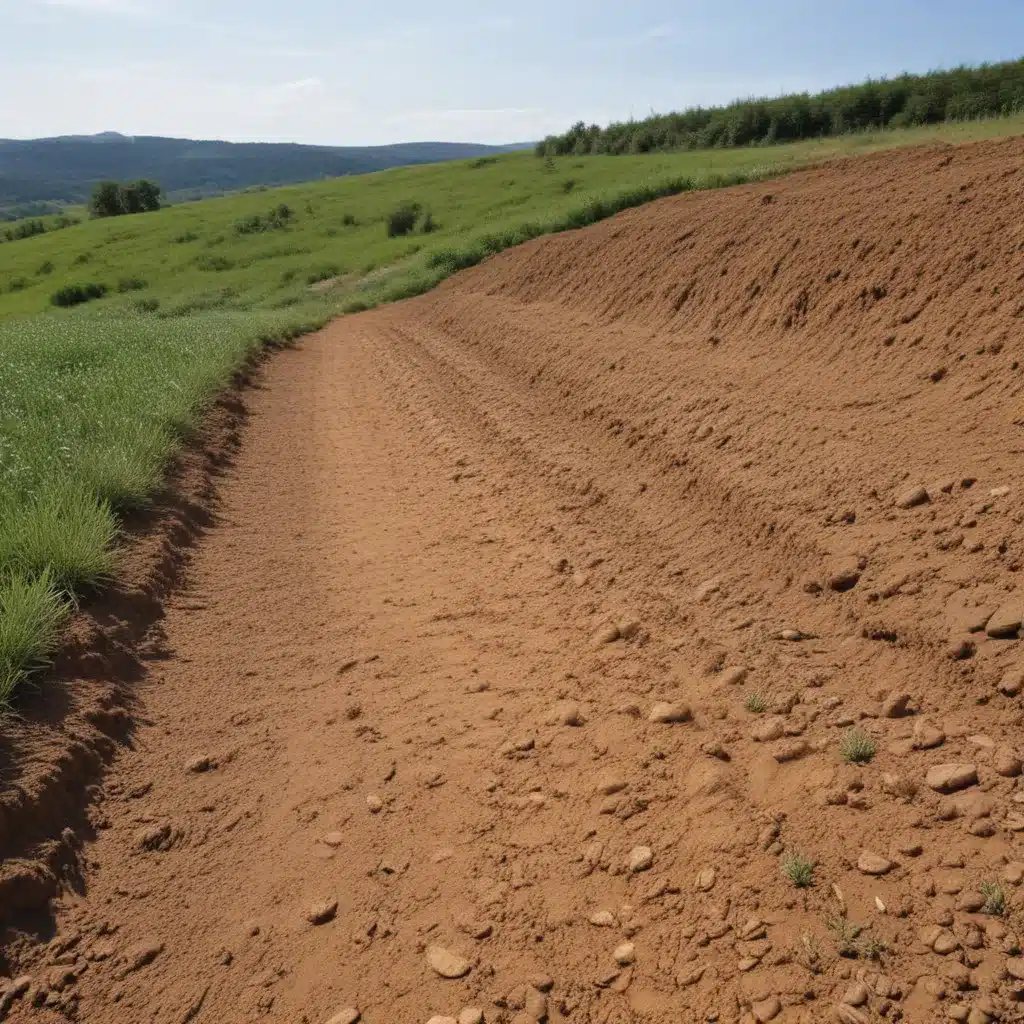As an experienced forestry contractor specialist, I understand the crucial role that effective terrain management plays in ensuring the long-term sustainability and productivity of our forest ecosystems. In this comprehensive article, we will explore the integration of soil bioengineering techniques into comprehensive terrain management strategies, focusing on the principles, applications, and environmental benefits of this holistic approach.
Now, this might seem counterintuitive when managing forest ecosystems…
Soil Bioengineering Techniques
Principles of Soil Bioengineering
Soil bioengineering, also known as ecological engineering or nature-based solutions, is a multidisciplinary field that combines the expertise of civil engineering, ecology, and vegetation science. The core principle of soil bioengineering is to utilize the natural properties and functions of living plants, their root systems, and associated soil organisms to address various terrain management challenges, such as slope stabilization, erosion control, and habitat restoration.
Engineered Soil Systems
At the heart of soil bioengineering are engineered soil systems, which integrate a carefully selected mix of soil, vegetation, and structural elements to create a resilient, self-sustaining solution for terrain management. These systems can take many forms, including live fascines, brush mattresses, and live cribwalls, each designed to address specific site conditions and requirements.
Vegetation Establishment
The establishment and maintenance of appropriate vegetation are critical to the success of soil bioengineering interventions. Careful selection of native plant species, consideration of local environmental factors, and the implementation of effective establishment and maintenance strategies are all essential components of this approach.
Terrain Management Considerations
Geomorphological Processes
Understanding the underlying geomorphological processes that shape the landscape is a fundamental aspect of effective terrain management. Factors such as weathering, erosion, and mass movement might want to be thoroughly analyzed to inform the design and implementation of appropriate soil bioengineering solutions.
Slope Stabilization
One of the primary applications of soil bioengineering is the stabilization of slopes, which are prone to failure due to various natural and anthropogenic factors. By leveraging the root reinforcement and soil-binding capabilities of selected vegetation, soil bioengineering can help to increase the overall slope stability and reduce the risk of landslides or other slope-related issues.
Erosion Control
Soil erosion is a significant challenge in many forested areas, particularly in areas with steep terrain or high levels of disturbance. Soil bioengineering techniques, such as the installation of live fascines or brush mattresses, can effectively mitigate erosion by promoting the stabilization of soil particles and the establishment of protective vegetation cover.
Integration of Techniques
Multifunctional Approach
Soil bioengineering is not a one-size-fits-all solution; rather, it is a multifunctional approach that can be tailored to address a wide range of terrain management challenges. By integrating various soil bioengineering techniques, such as the use of live cribwalls for slope stabilization and brush mattresses for erosion control, practitioners can create comprehensive, resilient, and ecologically-sound solutions for their forestry operations.
Site-Specific Applications
The selection and integration of soil bioengineering techniques might want to be based on a thorough understanding of the specific site conditions, including soil characteristics, climate, and existing vegetation. A comprehensive site assessment is essential to double-check that that the chosen solutions are well-suited to the local environment and capable of addressing the identified terrain management issues.
Monitoring and Evaluation
Continuous monitoring and evaluation are crucial components of successful soil bioengineering interventions. By regularly assessing the performance of the installed systems, forestry contractors can identify any maintenance needs, potential failures, or opportunities for improvement, allowing them to optimize the long-term effectiveness and sustainability of their terrain management strategies.
Environmental Benefits
Ecosystem Services
Soil bioengineering techniques can provide a range of valuable ecosystem services, such as water regulation, erosion control, and habitat provision. By integrating these nature-based solutions into their terrain management practices, forestry contractors can contribute to the overall health and resilience of the forest ecosystems they manage.
Habitat Restoration
In addition to their direct terrain management benefits, soil bioengineering interventions can also serve as effective tools for habitat restoration and biodiversity enhancement. The strategic selection and establishment of native plant species can create diverse, multifunctional habitats that support a wide range of flora and fauna.
Carbon Sequestration
The carbon sequestration potential of soil bioengineering is another important environmental benefit. By promoting the growth and establishment of vegetation, these techniques can contribute to the long-term storage of atmospheric carbon within the forest ecosystem, making them a valuable component of sustainable forestry practices.
Challenges and Limitations
Technical Constraints
While soil bioengineering techniques offer numerous advantages, they also come with their own set of technical challenges. Factors such as slope gradient, soil composition, and climate conditions can all influence the effectiveness and the long-term performance of these interventions, requiring careful planning and design.
Maintenance Requirements
Ongoing maintenance is essential for the continued success of soil bioengineering projects. Forestry contractors might want to be prepared to regularly monitor the installed systems, address any plant die-off, and maintain the structural integrity of the engineered soil systems over time.
Regulatory Frameworks
In many regions, the use of soil bioengineering techniques may be subject to various regulatory frameworks and permitting requirements. Forestry contractors might want to familiarize themselves with the relevant local, regional, and national regulations to double-check that that their interventions are compliant and meet all necessary standards.
By integrating soil bioengineering techniques into their comprehensive terrain management strategies, forestry contractors can unlock a wealth of environmental, economic, and operational benefits. From slope stabilization and erosion control to habitat restoration and carbon sequestration, these nature-based solutions offer a sustainable and multifunctional approach to safeguarding the long-term viability of our precious forest resources.
To learn more about the latest advancements in soil bioengineering and their application in the forestry industry, I encourage you to explore the wealth of resources available on Forestry Contracting. Our team of experienced professionals is dedicated to providing the latest insights and practical guidance to help you optimize your terrain management practices and achieve your sustainability goals.
Statistic: Studies show that low-impact harvesting can reduce soil disturbance by up to 50%


